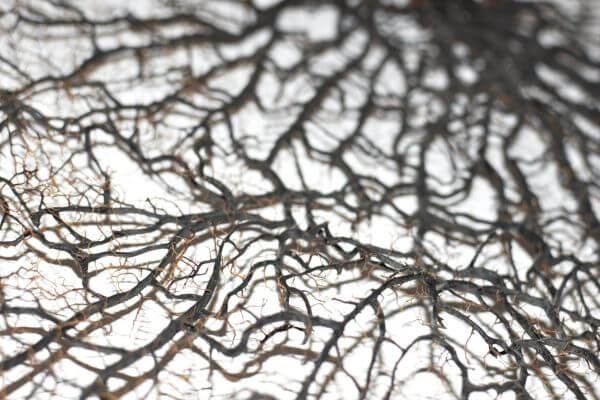How roots affect a septic tank
Roots grow naturally in search of water and nutrients. The moist soil surrounding a septic tank becomes a magnet for them. If they manage to reach the pipes or tank:
-
they enter the pipes, obstructing the passage,
-
exert pressure that can crack walls,
-
or saturate the filter field, preventing drainage.
When this occurs, it is common to resort to techniques such as pipe inspection with a TV unit to locate the problem or root infiltration services to remove them in a controlled manner.
Problem trees and shrubs: a list you should know
Not all trees have the same impact. Some have shallow, secure roots; others, however, are true invaders.
-
Willow and poplar: very water-seeking.
-
Eucalyptus and elm: aggressive and fast-growing.
-
Laurel, oleander and bamboo: shrubs with powerful roots.
-
Heavy-use turf: does not break pipes, but increases moisture, which attracts roots.
These specimens should be kept at a distance of more than 7–10 metres.
Safe options for a risk-free garden
Fortunately, you don’t have to give up on having a beautiful garden. There are alternatives that work well with septic tanks:
-
Mediterranean aromatic plants (rosemary, lavender, thyme).
-
Small shrubs with shallow roots.
-
Decorative ground cover.
The aim is to enjoy a green environment without compromising the sanitation system.
Common damage and how it is resolved
The effects of invasive roots are often detected late:
-
Recurring blockages in the downpipes.
-
Unpleasant odours in the garden.
-
Dampness in the ground.
The solution can range from repairing pipes without construction work to a specialised water leak detection service to identify the affected area. In the most serious cases, it may be necessary to replace entire sections of the installation.
Tips for preventing root intrusion
Beyond choosing the right plants, it is advisable to take preventive measures:
-
Plan your garden before installing a septic tank.
-
Avoid planting gardens or crops on the filtration field.
-
Install physical or chemical barriers on problematic land.
-
Sign a maintenance contract that includes regular inspections and monitoring of the installation.
These actions save money and, above all, prevent unexpected breakdowns.
Frequently asked questions
Can a small tree cause problems?
Yes, even though it is young, its root system can expand rapidly if it is near a constant source of water.
What if I already have trees near the pit?
It is advisable to monitor its growth and schedule regular camera inspections to avoid surprises.
Do fine roots also damage the system?
Yes, they can enter through tiny cracks and expand inside the pipes.
Can a septic tank be relocated because of vegetation?
In extreme cases, yes, although it is usually more economical to remove invasive vegetation and repair the existing system.
A planned garden, a protected pit
Nature always seeks water, and septic tanks are a clear target for many roots. Avoiding invasive species and choosing safe plants is just as important as regular emptying.
At Limpiezas Domingo, we offer comprehensive solutions that ensure the durability of your property and peace of mind for your community or home. Our goal is to help you prevent problems before they arise, with a preventive and professional approach.
👉 Protect your septic tank and prevent future problems with professional maintenance.

